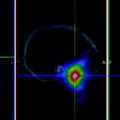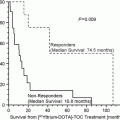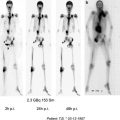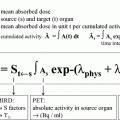First author, year
Country
Patients enrolled (n)
TNM
Pathology
(P/F)
Type of surgery
Dose (mCi)
Follow-up time (mo)
Definition of successful ablation
Method of preparation
Bal, 1996
India
149
TxNxMo
87/62
NTT, STT
30 vs. 50
6–12
No uptake on neck and WBS scan
Withdrawal
Bal, 2004
India
509
TxNxMo
410/99
NTT, STT/HT
30 vs. 50
6
No uptake on WBS, Tg < 10 ng/ml
Withdrawal
Zaman, 2006
Pakistan
40
TxNxMo
23/17
TT and NTT
50 vs. 100
6
No uptake on WBS, Tg < 2.0 ng/ml
Not mentioned
Pilli, 2007
Italy
72
T1-3NxMo
66/6
NTT
50 vs. 100
6–8
No uptake on WBS, Tg < 1.0 ng/ml
rhTSH
Mäenpää, 2008
Finland
160
TxNxMo
146/11
TT and NTT
30 vs. 100
4–8
No uptake on WBS, Tg < 1.0 ng/ml
Withdrawal and rhTSH
Fallahi, 2012
Iran
341
TxNxM0
326/15
TT and NTT
30 vs. 100
12
No uptake on WBS and Tg < 2.0 ng/ml with anti-Tg-off <100 IU/ml
Withdrawal
Caglar, 2012
Turkey
108
T1-2NxM0
101/4
TT
20 vs. 100
6–12
Neck uptake < 0.2 %, Tg < 2.0 ng/ml and neck ultrasound (−)
Withdrawal
Mallick, 2012
United Kingdom
438
T1-3NxM0
NC
TT and NTT
30 vs. 100
6–9
Neck uptake < 0.1 % and Tg < 2.0 ng/ml
Withdrawal and rhTSH
Schlumberger, 2012
France
752
T1-2NxM0
693/59
TT
30 vs. 100
6–10
Neck ultrasound, Tg < 1.0 ng/mlc
Withdrawal and rhTSH
Bal, 2012
India
422
T1-3N0M0
360/62
TT and NTT
25 vs. 50 vs. 100
6
No uptake on neck and WBS scan
Withdrawal
11 For RRA rhTSH is Equally Effective Compared with Conventional Preparation By Thyroid Hormone Withdrawal
The first single-center randomized controlled trial, including 72 patients with DTC pretreated with recombinant human thyrotropin, Pilli and colleagues observed that short-term remnant ablation rates were the same (88.9 %) after administering 50 mCi, compared with 100 mCi of RAI (Pilli et al. 2007). Finally, two large high-powered multicentre national randomized trials conducted from France and from the UK independently proved noninferiority of Thyrogen stimulated RRA compared to T4 withdrawal RRA with 30 mCi or 100 mCi131I administration (Schlumberger et al. 2012; Mallick et al. 2012).
12 ATA Guideline Versus New Evidences for Low-Dose RRA
RECOMMENDATION 36 states that the minimum activity (30–100 mCi) necessary to achieve successful remnant ablation should be utilized, particularly for low-risk patients. (Recommendation rating: B). Now the time has come for all international guideline committees to revise the recommendations for remnant ablation. The new recommendation should advocate for 30 mCi of 131I for remnant ablation either under rhTSH stimulation or by THW.
13 Rationale of Low-Dose RRA
There are several advantages to both the patient and healthcare provider for using a lower activity of radioiodine, including less time in isolation, a shorter hospital stay (when local or national regulations deem this necessary), reduced exposure of radioiodine to the environment, and lower financial cost. Furthermore, radioiodine ablation is associated with an increased risk of second primary malignancies; the lower the activity administered the lower the risk. The risks of radioiodine therapy must be considered. A large multicenter cohort study analyzed the risk of secondary malignancies in 6,841 patients with DTC (62 % were treated with radioiodine) (Rubino et al. 2003). The investigators observed a significant 30 % increased risk of second primary malignancies in patients treated with radioiodine, and there appeared to be a linear relationship between the cumulative dose and solid tumors (4 % increased risk/GBq131I). An estimated 53 solid tumors are expected among 10,000 patients after 10 years if they were treated with 100 mCi compared with only 16 if they had been treated with 30 mCi. Although these data are estimates from an extrapolation of higher cumulative doses of radioiodine, and not actual data from patients receiving 100 mCi 131I, they should provoke thyroidologists to consider that there may be risks—however small it may be associated with administration of radioiodine for remnant ablation (Iyer et al. 2011; Sawka et al. 2009).
14 TSH Suppression Issues in Low-Risk DTC Patients
A prospective cohort study (Jonklaas et al. 2006) of 2,936 patients found that OS improved significantly when the TSH was suppressed to undetectable levels in patients with National Thyroid Cancer Treatment Cooperative Study Group (NTCTCSG) stage III or IV disease and suppressed to the subnormal to undetectable range in patients with NTCTCSG stage II disease; however, in the latter group there was no incremental benefit from suppressing TSH to undetectable levels. Suppression of TSH was not beneficial in patients with stage I disease. In another study, there was a positive association between serum TSH levels and the risk for recurrent disease and cancer-related mortality (Hovens et al. 2007; Brabant 2008).
ATA RECOMMENDATION 40 states that initial TSH suppression to below 0.1 mU/L is recommended for high-risk and intermediate-risk thyroid cancer patients, while maintenance of the TSH at or slightly below the lower limit of normal (0.1–0.5 mU/L) are appropriate for low-risk patients. Similar recommendations apply to low-risk patients who have not undergone remnant ablation, i.e., serum TSH 0.1–0.5 mU/L. (Recommendation rating: B)
15 Conclusions
The benefit of radioiodine in younger patients with smaller tumors (≤4 cm) is less clear, and potential risks of therapy need to be thoroughly considered. We must individualize radioiodine therapy-(a) use 30 mCi 131I for RRA either with rhTSH stimulation or THW, the lowest effective dose of radioiodine, in low-risk patients; (b) for older patients with larger tumors (>4 cm), and patients with lymph node involvement, may significantly benefit from RRA, probably with higher dose of radioiodine (≥50 mCi). The current reality is that in the absence of randomized clinical trial to prove or disprove the beneficial long-term effect of RRA, the decision-making about RRA in low-risk thyroid carcinoma is difficult and complex. Thus, till definite evidence is generated from high quality future study, one must limit the known harmful effect of radiation, and the good clinical practice must follow the basic principle of primum non nocere (Latin phrase that means “first, do no harm”).
References
American Cancer Society: Cancer Facts & Figures (2011) http://www.cancer.org/acs/groups/content/@epidemiologysurveilance/documents/document/acspc-029771.pdf
American Cancer Society: Cancer Facts & Figures (2013) http://www.cancer.org/acs/groups/content/@epidemiologysurveilance/documents/document/acspc-036845.pdf
Bal CS, Chandra P, Kumar A, Dwivedi SN (2010) A randomized non-inferiority trial to determine the optimum dose of radioiodine for remnant ablation in differentiated thyroid cancer [abstract]. Endocr Rev 31(Suppl 1):S1674
Baudin E, Travagli JP, Ropers J, Mancusi F, Bruno-Bossio G, Caillou B, Cailleux AF, Lumbroso JD, Parmentier C, Schlumberger M (1998) Microcarcinoma of the thyroid gland: the Gustave-Roussy Institute experience. Cancer 83:553–559PubMed
Stay updated, free articles. Join our Telegram channel

Full access? Get Clinical Tree








